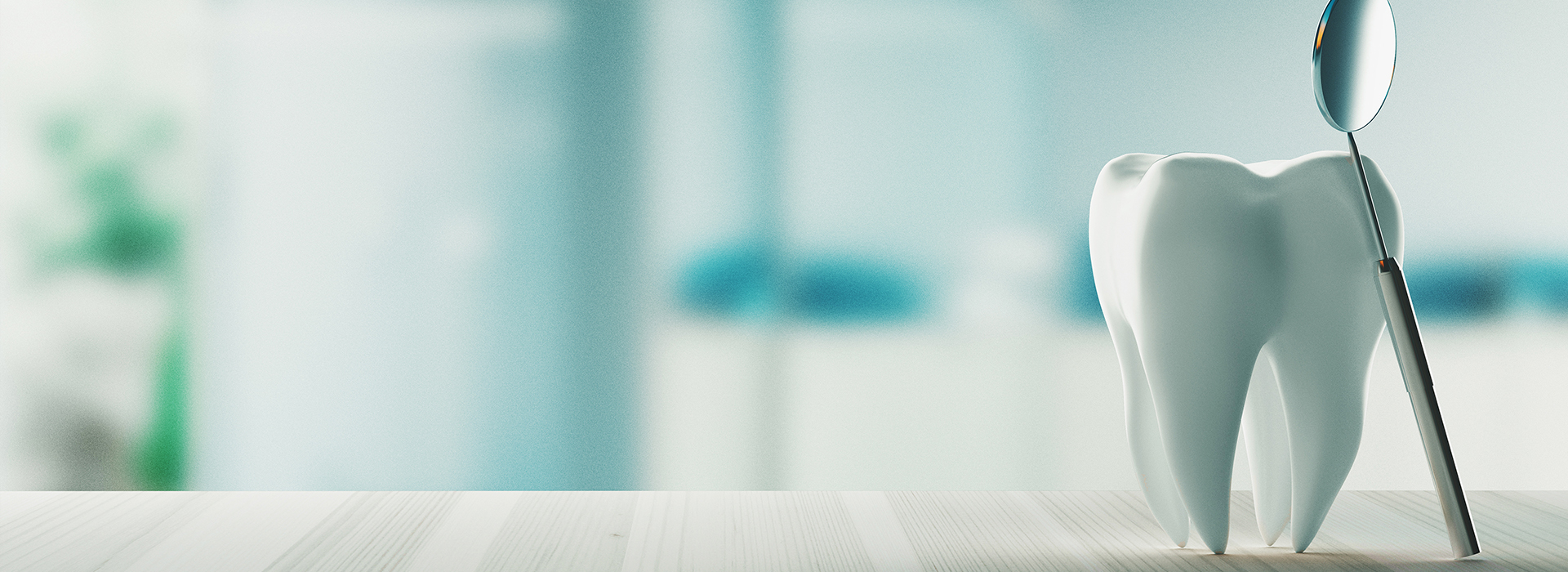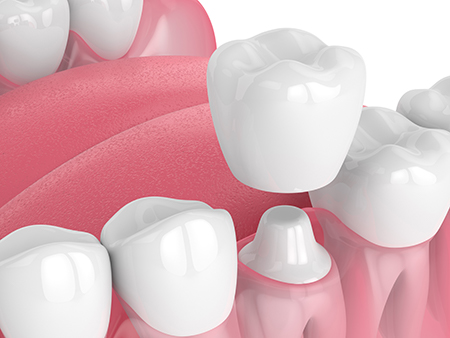
At Newpoint Family Dental, we focus on restoring teeth so they look natural and perform reliably for years to come. Our approach blends modern materials and digital workflows with careful planning to deliver ceramic crowns that meet both functional needs and aesthetic goals.
Teeth are remarkably strong, but extensive decay, trauma, large restorations, or wear from grinding can leave a tooth too fragile for a routine filling. In those cases, a full-coverage crown helps rebuild the tooth’s shape, protect remaining structure, and restore comfortable biting and chewing.
Advances in dental ceramics mean crowns can now be metal-free while offering excellent strength and lifelike appearance. These materials allow us to create restorations that blend with your smile and are kinder to gum tissue and sensitive patients.
Every treatment plan is tailored to the individual. We evaluate the tooth’s condition, the bite, and your cosmetic priorities to recommend the best type of ceramic crown and a timeline that fits your needs.
A crown is more than a cosmetic upgrade — it’s a protective restoration that restores form and function when a tooth is significantly compromised. Crowns are commonly recommended when there isn't enough solid tooth structure left for a filling to hold, when a tooth has split or fractured, or when a large restoration needs replacement.
After root canal therapy, a tooth can become brittle and benefit from full coverage to prevent future fractures. Crowns are also used to cap implant abutments, restore the terminal teeth that support a bridge, and correct teeth that are badly worn or misformed.
Deciding whether a crown is the right choice depends on the tooth’s remaining structure, the forces it must endure in your bite, and your aesthetic priorities. We’ll walk you through the reasons for recommending a crown so you fully understand the goals of treatment.

Contemporary ceramic materials are designed to replicate the optical properties of enamel and dentin — the way light passes through and reflects off a tooth. That translucency gives ceramic crowns a natural depth and sheen that older metal-based restorations could not match.
Because many all-ceramic systems are strong at thinner dimensions, less healthy tooth structure often needs to be removed during preparation. That conservative approach helps preserve what’s left of the natural tooth while still providing a durable restoration.
Ceramics are also biocompatible and resistant to staining. Without a metal substructure, crowns avoid the dark margins that can appear at the gumline over time, and they are a suitable option for patients with metal sensitivities.
Not all ceramic crowns are identical. Materials vary in translucency, strength, and how they are manufactured, and we choose the option that best fits the tooth’s location and functional demands. For front teeth, higher-translucency ceramics help achieve a highly aesthetic result; for back teeth, stronger monolithic ceramics may be preferable.
Popular, well-established choices include lithium disilicate for a balance of beauty and strength, pressable leucite-reinforced ceramics for lifelike shading, and modern zirconia options (from monolithic to high-translucent varieties) for cases that need exceptional durability.
Your dentist will review the advantages of each material and explain why one is recommended for your situation. Factors such as bite forces, opposing teeth, smile line, and how much of the natural tooth remains all influence the final selection.

The crown process begins with an exam and imaging to assess the tooth and surrounding tissues. Next, the tooth is prepared by shaping it to receive the crown while preserving as much healthy structure as possible. Digital scanning or traditional impressions capture the exact anatomy for an accurate fit.
Many practices now use computer-aided design and milling (CAD/CAM) to fabricate ceramic crowns precisely, sometimes allowing same-day restoration in a single visit. Whether milled in-office or fabricated by a trusted dental laboratory, crowns are carefully shaded and finished to harmonize with adjacent teeth.
At the placement appointment, the crown is tested for fit, bite, and appearance before being bonded or cemented. We provide guidance on care and maintenance so your restoration remains functional and attractive for years.

Our team emphasizes careful planning and clear communication so you understand each step of the restorative process. We combine aesthetic goals with mechanical considerations to create crowns that look natural and perform well under normal chewing forces.
Whether the treatment is straightforward or involves additional restorative steps such as core build-ups or implant connections, we coordinate care to produce predictable results. Our commitment to contemporary materials and proven techniques helps deliver outcomes that stand the test of time.
Newpoint Family Dental brings experience and a patient-centered approach to every crown case. We listen to your concerns, explain the available options, and tailor treatment to fit your oral health and smile objectives.
In summary, ceramic crowns offer a reliable way to restore strength, protect vulnerable teeth, and achieve a natural-looking appearance. If you’d like to learn more about whether an all-ceramic crown is right for you, please contact us for more information.
A ceramic crown is a custom-made, full-coverage restoration fabricated from tooth-colored ceramic materials to rebuild a damaged or weakened tooth. It fits over the prepared tooth to restore shape, strength and function while matching the surrounding teeth. Because ceramic closely mimics the optical properties of enamel and dentin, these crowns provide a highly natural appearance.
Ceramic crowns can be bonded or cemented depending on the material and clinical needs, and they are commonly selected when a filling is insufficient to protect remaining tooth structure. Modern ceramics are biocompatible and resistant to staining, making them a good option for patients with metal sensitivities. Your dentist will explain how a ceramic crown can address both functional and aesthetic goals for the affected tooth.
Ceramic crowns are recommended when a tooth has extensive decay, a large existing restoration, a fracture, or significant wear that leaves inadequate structure for a filling. They are also commonly used after root canal therapy to reinforce the tooth and reduce the risk of future breakage. Crowns can cap implant abutments or restore terminal bridge teeth when full coverage is required for long-term stability.
The decision to place a crown depends on the amount of remaining tooth, the forces the tooth will endure in your bite, and your cosmetic priorities. Your dentist will evaluate imaging, perform an oral exam and discuss whether a ceramic crown offers the best balance of strength and esthetics for your situation. This collaborative approach helps ensure the recommended restoration meets both functional needs and appearance goals.
All-ceramic crowns eliminate the metal substructure found in porcelain-fused-to-metal restorations, which removes the risk of visible dark lines at the gumline and improves biocompatibility for some patients. Advances in ceramic technology now provide materials that combine excellent strength with lifelike translucency, allowing clinicians to achieve both durability and superior esthetics. While metal-based options historically offered high strength for posterior teeth, modern high-strength ceramics such as zirconia can meet many of those functional demands without metal.
The choice between ceramic and metal-containing crowns depends on the tooth's location, bite forces, and cosmetic objectives. Front teeth often benefit from higher-translucency ceramics for a seamless match, while posterior teeth may require denser ceramic formulations to withstand chewing forces. Your dentist will explain the trade-offs and recommend the material that best fits the clinical requirements.
Common ceramic materials include lithium disilicate, pressable leucite-reinforced ceramics and various forms of zirconia, each offering different balances of translucency and strength. Lithium disilicate is valued for its esthetic quality and adequate strength, while monolithic zirconia provides exceptional durability for high-stress areas. Laboratories and in-office milling systems can produce restorations in these materials with precise shading and contours to harmonize with adjacent teeth.
The selection process considers the tooth's position, opposing tooth material, bite forces, esthetic demands and how much natural tooth structure remains. Your dentist will review these factors and explain why a particular ceramic is recommended for your crown. This individualized material choice helps achieve predictable functional results and a natural-looking outcome.
Treatment begins with a comprehensive exam and imaging to evaluate the tooth and surrounding tissues, followed by tooth preparation where damaged structure is shaped to receive the crown. Digital scanning or traditional impressions capture the exact contours for fabrication, and any necessary core buildup or root canal therapy is completed beforehand to ensure a stable foundation. Attention to occlusion and bite relationships is incorporated to minimize future wear and optimize function.
Once the crown is fabricated, it is tried in, adjusted for fit and appearance, and then bonded or cemented in place after confirming proper contact and occlusion. Your dentist will provide care instructions and discuss any follow-up needed to monitor the restoration. Routine dental hygiene and regular checkups help maintain the crown and surrounding gum health over time.
Yes, many practices offer same-day crown solutions using CAD/CAM systems that scan, design and mill a ceramic crown in-office during a single appointment. This workflow minimizes multiple visits by allowing immediate fabrication and placement when conditions are suitable and no additional laboratory steps are required. Same-day technology works well for many ceramic materials, though complex cases or specific material choices may still use a dental laboratory.
Whether a single-visit crown is appropriate depends on the tooth's condition, the chosen ceramic, and any preparatory work required. Your dentist will discuss the benefits and limitations of same-day restoration and recommend the most predictable approach for lasting results. If same-day treatment is not ideal, a lab-fabricated crown can provide additional customization and shading control.
Care for a ceramic crown closely mirrors the care for natural teeth: brush twice daily with a fluoride toothpaste, floss daily and attend regular dental checkups and cleanings. Avoiding hard or excessively chewy foods and refraining from using teeth as tools reduces the risk of chipping or fracture. If you have bruxism or clenching, your dentist may recommend a night guard to protect the crown and surrounding teeth from excessive forces.
Maintain good gum health by cleaning around the crown margin and following any home-care instructions provided by your dental team. Promptly report any sensitivity, looseness or changes you notice around the crowned tooth so early issues can be addressed. Proactive maintenance and routine professional evaluations help identify wear, fit problems or recurrent decay at an early stage.
The longevity of a ceramic crown depends on factors such as the material selected, the quality of preparation and bonding, the patient’s bite forces and oral hygiene habits. Many ceramic crowns provide durable service for years when properly designed and maintained, but individual outcomes vary based on functional demands and care. Teeth that receive excellent restorative planning and patient adherence to care recommendations tend to have the best long-term performance.
Risks that can shorten a crown’s lifespan include recurrent decay at the margin, traumatic injury, unaddressed parafunctional habits and poor oral hygiene. Regular evaluations allow the dentist to monitor crown integrity and intervene early if maintenance or replacement becomes necessary. Thoughtful material selection and precise clinical technique are key contributors to predictable, long-lasting restorations.
Ceramic crowns are frequently used to restore teeth after root canal therapy because treated teeth can become more brittle and benefit from full-coverage protection. A well-designed crown helps redistribute biting forces and reduce the risk of fracture, particularly when a core build-up reinforces the remaining tooth structure. For implant restorations, ceramic crowns are commonly attached to abutments and can provide an esthetic, biocompatible replacement that closely resembles a natural tooth.
When placing crowns on implants, the restorative team evaluates implant position, abutment type and occlusion to ensure a secure and harmonious result. Similarly, teeth requiring crowns after endodontic therapy are assessed for sufficient ferrule and support before proceeding. Your dentist will explain the clinical considerations and the restoration pathway appropriate for your tooth or implant site.
Our team emphasizes careful treatment planning, modern materials and precise digital workflows to deliver ceramic crowns that balance esthetics and function for each patient. We take time to evaluate the tooth, bite and smile goals, explain material options and coordinate any necessary preparatory steps so outcomes are predictable and tailored to individual needs. Consistent attention to fit, occlusion and tissue health helps our restorations perform well over time.
Newpoint Family Dental integrates contemporary techniques such as digital scanning and CAD/CAM fabrication when appropriate to streamline the process and improve precision. Patients can expect clear explanations, a patient-centered approach and follow-up care focused on preserving both the restoration and overall oral health. If you have questions about ceramic crowns or would like to discuss whether this treatment is right for you, the team can walk you through the options and next steps.
Our mission is to help every patient enjoy healthy teeth and a confident smile, providing care that meets your needs and exceeds expectations.
